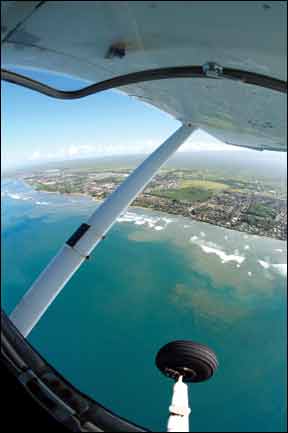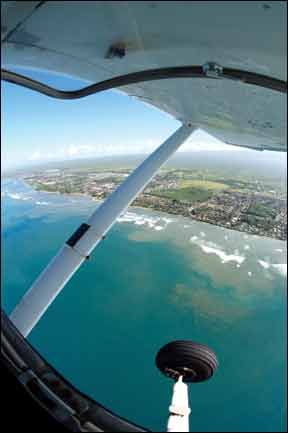Reader David R. Wilkerson is incorrect when he says (Unicom, February 2011), “[A]irspace can have more that one designation, even under ICAO.” Firstly he mentions TRSA, which is not part of ICAO airspace designations. Instead, its a carryover from old U.S. airspace designations. Some TRSAs still exist today usually because traffic volumes are not sufficient to make them Class C airspace. Participation remains voluntary within them. Other airspace designations used in the U.S. are not 288 ICAO designations. These include MOA, MTR and restricted areas. Second, Altus AFB has a part-time control tower. What this means is that Class D airspace becomes Class E airspace when the tower shuts down because presumably it has weather observation. Otherwise it would revert to Class G airspace. This means that Class D and Class E do not exist simultaneously as he states. Thanks! Luca F. Bencini-Tibo Overwater Gear Despite Mr. Dorans letter in your February issue pointing out cables sometimes are strung across bodies of water in rural Canada, that is the rare exception elsewhere. In most cases, a water landing could be the preferred choice if you are prepared mentally, procedurally and with the right gear. You cover the gear part pretty well in Februarys article, “Overwater Gear,” but the sidebar “Overwater Risk Management” still treats the subject as a worst-case option, saying, “Over most land areas, theres a strong likelihood of being able to find a flat spot on which to set down.” My point is, if you experience an engine failure over a tough landing area and you can make it to the water, go for the water. That is what Capt. Sullenberger did in New York, commercial planes being outfitted and their crews trained for a ditching. Water is generally flat and unobstructed, and there are often boats and observers around to help. Even if you find the mythical “freshly plowed field” to land on, you could be unobserved, nowhere near a road or anything else, injured and on fire. And you just flew by that nice flat lake five miles back because you consider ditchings too risky and werent prepared to take advantage of it. Brian Barbata Straight-Ins Here is a topic about which Id love to hear some informed opinion: Throughout my flight training, I was instructed to never fly a straight-in approach. “Always fly the pattern,” was the decree. Downwind, base and final. First notch of flaps abeam the numbers, next on base, last, if necessary, on final. Specific airspeeds for each leg. I flew that routine so many times I could have probably done it blindfolded. Fast-forward to my first flight as a private pilot. Our path put us on a perfect straight-in, which is what the controller gave us. Never having done this before, and with faster traffic behind me, I ended up flying my worst approach and landing ever. All my cues were gone, and I found myself way too fast, late on the flaps, floating down the runway-just an awful landing. I think I heard the controllers laughing. (As a side note, my wife thought it was a great landing. Thank goodness for inexperience.) A year or so later, Im still not comfortable with the straight-in approach, although Ive flown several. My question is: Do you think the straight-in approach is something that should be taught during basic flight training? And do you have any advice for determining key points for speed reduction and flap extension? John Cotton Straight-ins definitely should be taught during primary training. Look for a feature article on this topic from us in the near future.
Weston, Fla.
Hawaii
Windham, N.H.




